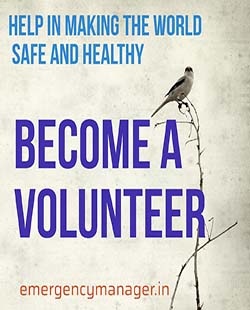
There are several types of first aid (and first aider) which require specific additional training. These are usually undertaken to fulfill the demands of the work or activity undertaken.
- Aquatic/Marine first aid is usually practiced by professionals such as lifeguards, professional mariners or in diver rescue, and covers the specific problems which may be faced after water-based rescue or delayed MedEvac.
- Battlefield first aid takes into account the specific needs of treating wounded combatants and non-combatants during armed conflict.
- Hyperbaric first aid may be practiced by SCUBA diving professionals, who need to treat conditions such as the bends.
- Oxygen first aid is the providing of oxygen to casualties who suffer from conditions resulting in hypoxia.
- Wilderness first aid is the provision of first aid under conditions where the arrival of emergency responders or the evacuation of an injured person may be delayed due to constraints of terrain, weather, and available persons or equipment. It may be necessary to care for an injured person for several hours or days.
- Mental health first aid is taught independently of physical first aid. How to support someone experiencing a mental health problem or in a crisis situation. Also how to identify the first signs of someone developing mental ill health and guide people towards appropriate help.
First Aid is needed in following conditions:-
- Altitude sickness, which can begin in susceptible people at altitudes as low as 5,000 feet, can cause potentially fatal swelling of the brain or lungs.
- Anaphylaxis, a life-threatening condition in which the airway can become constricted and the patient may go into shock. The reaction can be caused by a systemic allergic reaction to allergens such as insect bites or peanuts. Anaphylaxis is initially treated with injection of epinephrine.
- Battlefield first aid—This protocol refers to treating shrapnel, gunshot wounds, burns, bone fractures, etc. as seen either in the ‘traditional’ battlefield setting or in an area subject to damage by large-scale weaponry, such as a bomb blast.
- Bone fracture, a break in a bone initially treated by stabilizing the fracture with a splint.
- Burns, which can result in damage to tissues and loss of body fluids through the burn site.
- Cardiac Arrest, which will lead to death unless CPR preferably combined with an AED is started within minutes. There is often no time to wait for the emergency services to arrive as 92 percent of people suffering a sudden cardiac arrest die before reaching hospital according to the American Heart Association.
- Choking, blockage of the airway which can quickly result in death due to lack of oxygen if the patient’s trachea is not cleared, for example by the Heimlich Maneuver.
- Childbirth.
- Cramps in muscles due to lactic acid build up caused either by inadequate oxygenation of muscle or lack of water or salt.
- Diving disorders, drowning or asphyxiation.
- Gender-specific conditions, such as dysmenorrhea and testicular torsion.
- Heart attack, or inadequate blood flow to the blood vessels supplying the heart muscle.
- Heat stroke, also known as sunstroke or hyperthermia, which tends to occur during heavy exercise in high humidity, or with inadequate water, though it may occur spontaneously in some chronically ill persons. Sunstroke, especially when the victim has been unconscious, often causes major damage to body systems such as brain, kidney, liver, gastric tract. Unconsciousness for more than two hours usually leads to permanent disability. Emergency treatment involves rapid cooling of the patient.
- Hair tourniquet a condition where a hair or other thread becomes tied around a toe or finger tightly enough to cut off blood flow.
- Heat syncope, another stage in the same process as heat stroke, occurs under similar conditions as heat stroke and is not distinguished from the latter by some authorities.
- Heavy bleeding, treated by applying pressure (manually and later with a pressure bandage) to the wound site and elevating the limb if possible.
- Hyperglycemia (diabetic coma) and Hypoglycemia (insulin shock).
- Hypothermia, or Exposure, occurs when a person’s core body temperature falls below 33.7 °C (92.6 °F). First aid for a mildly hypothermic patient includes rewarming, which can be achieved by wrapping the affected person in a blanket, and providing warm drinks, such as soup, and high energy food, such as chocolate. However, rewarming a severely hypothermic person could result in a fatal arrhythmia, an irregular heart rhythm.
- Insect and animal bites and stings.
- Joint dislocation.
- Poisoning, which can occur by injection, inhalation, absorption, or ingestion.
- Seizures, or a malfunction in the electrical activity in the brain. Three types of seizures include a grand mal (which usually features convulsions as well as temporary respiratory abnormalities, change in skin complexion, etc.) and petit mal (which usually features twitching, rapid blinking, or fidgeting as well as altered consciousness and temporary respiratory abnormalities).
- Muscle strains and Sprains, a temporary dislocation of a joint that immediately reduces automatically but may result in ligament damage.
- Stroke, a temporary loss of blood supply to the brain.
- Toothache, which can result in severe pain and loss of the tooth but is rarely life-threatening, unless over time the infection spreads into the bone of the jaw and starts osteomyelitis.
- Wounds and bleeding, including lacerations, incisions and abrasions, Gastrointestinal bleeding, avulsions and Sucking chest wounds, treated with an occlusive dressing to let air out but not in.
..... .... Login with Google and support us
Thanks


 89
89
